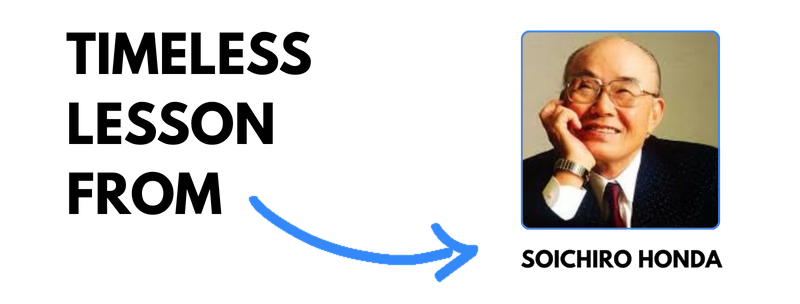Soichiro Honda: Failure, Fire, and Fast Cars
The son of a blacksmith, he grew up surrounded by tools and machines. From a young age, he was fascinated by mechanics and dreamed of creating something that would change the way people moved.
Soichiro Honda was born on 17 November 1906 in Komyo, Japan. The son of a blacksmith, he grew up surrounded by tools and machines. From a young age, he was fascinated by mechanics and dreamed of creating something that would change the way people moved.
Before we continue, a quick word from today’s sponsor:
Cut Costs. Not Corners.
Economic pressure is rising, and doing more with less has become the new reality. But surviving a downturn isn’t about stretching yourself thinner; it’s about protecting what matters most.
BELAY matches leaders with fractional, cost-effective support — exceptional Executive Assistants, Accounting Professionals, and Marketing Assistants — tailored to your unique needs. When you're buried in low-level tasks, you lose the focus, energy, and strategy it takes to lead through challenging times.
BELAY helps you stay ready for whatever comes next.
Honda began his career as a mechanic, working on automobiles and motorcycles. In 1937, he founded Tokai Seiki, a company that manufactured piston rings. His early work, however, wasn’t good enough. Toyota rejected his first batch for poor quality. Instead of giving up, Honda went back to school, studied engineering more deeply, and perfected his design. Eventually, he secured Toyota’s business.
World War II brought disaster. His factory was bombed twice, and an earthquake later destroyed what remained. Many would have stopped there, but Honda sold the ruins of his company and used the proceeds to start over.
In 1946, he founded Honda Technical Research Institute, producing motorized bicycles to meet Japan’s postwar need for affordable transport. Just two years later, he incorporated Honda Motor Co. Within a decade, Honda motorcycles dominated Japan and then the global market.
By the 1960s, Honda entered the car business, bringing his obsession with speed and engineering excellence to automobiles. Models like the Civic and Accord became worldwide hits, and Honda soon entered Formula One racing, fulfilling his lifelong passion for performance.
Fail Forward
Honda’s story is one of resilience. His first products were rejected. His factory was bombed. His business was flattened by an earthquake. Yet every failure became a step forward.
He famously said, “Success is 99% failure.” Instead of seeing setbacks as endings, he treated them as data. Setbacks are a chance to adjust, improve, and try again.
Setbacks are inevitable, but failure only counts if you stop. Honda built one of the world’s largest car companies not by avoiding mistakes, but by outlasting them.
Until next time,
The Chronicler





